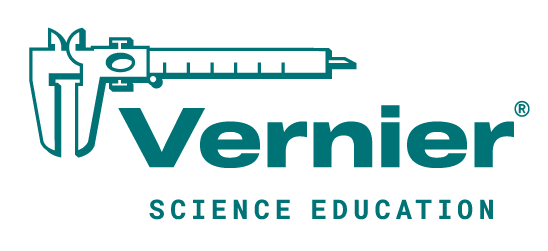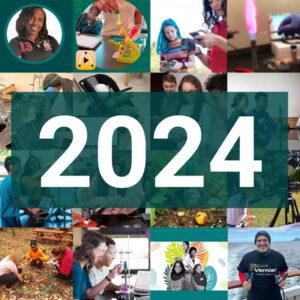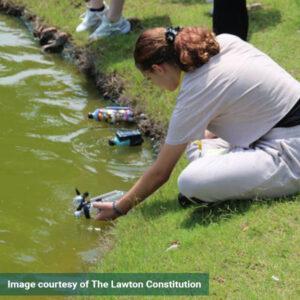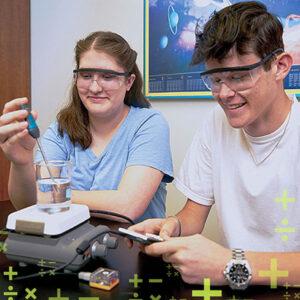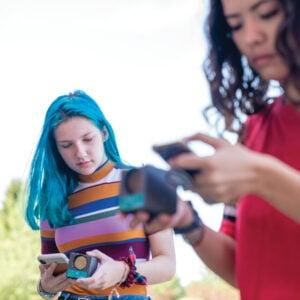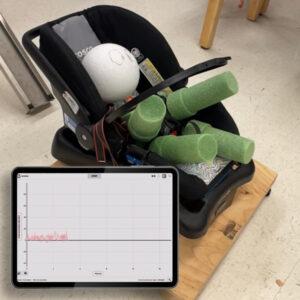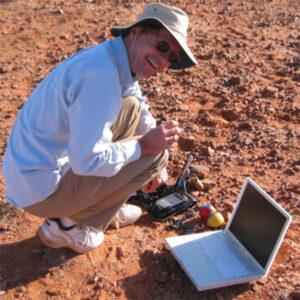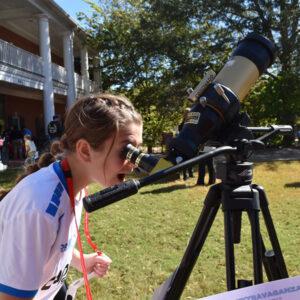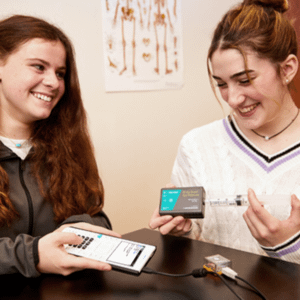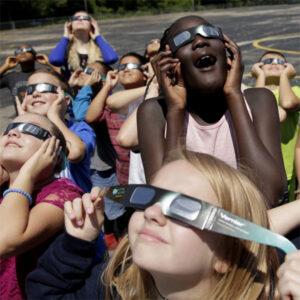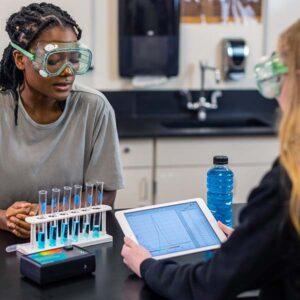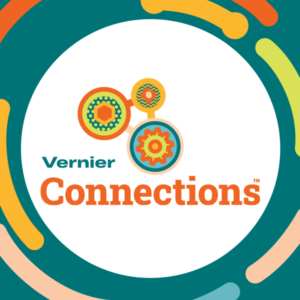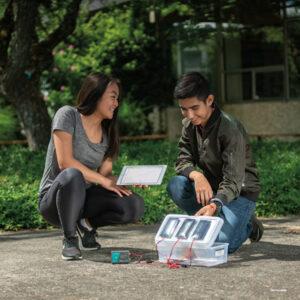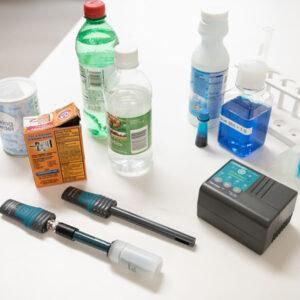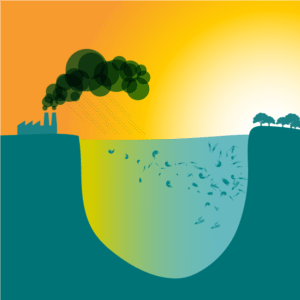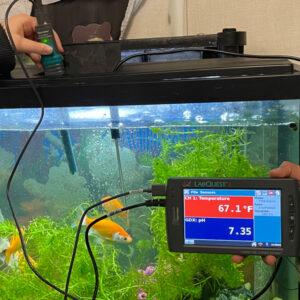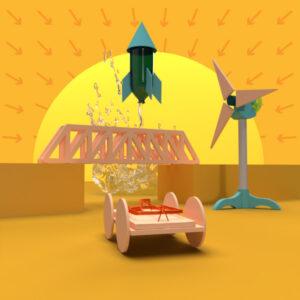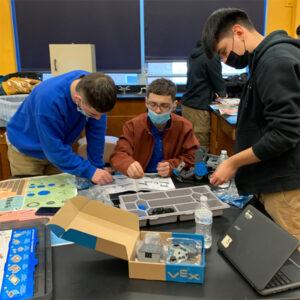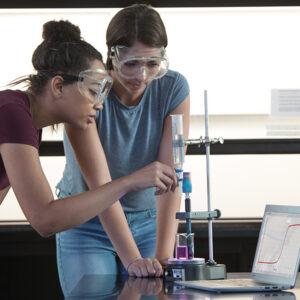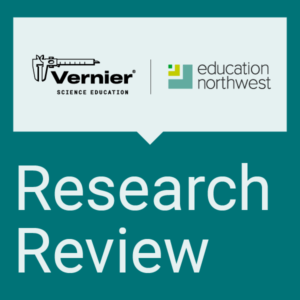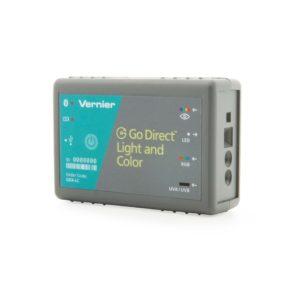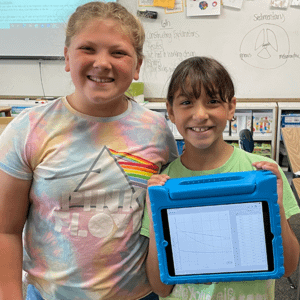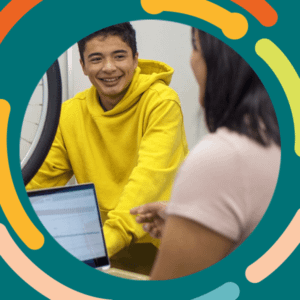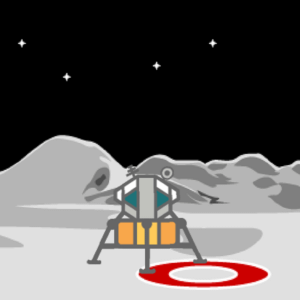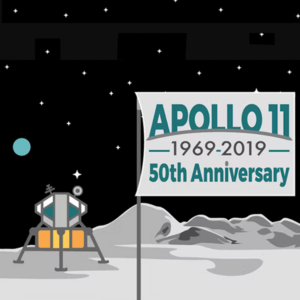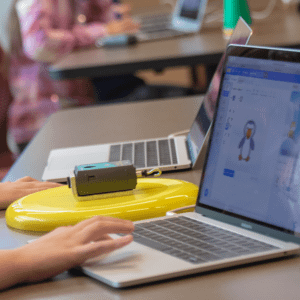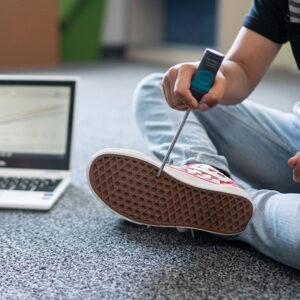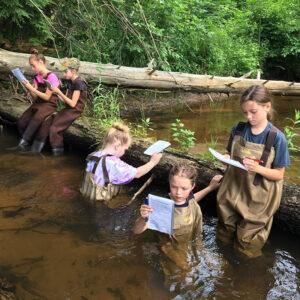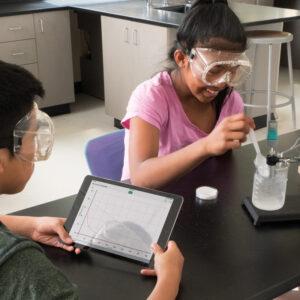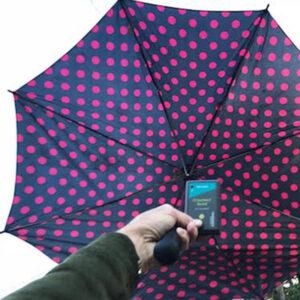
Sharing ideas and inspiration for engagement, inclusion, and excellence in STEM
Our Top Blog Posts of 2024
Wow, 2024 has been an unforgettable year! From launching our inaugural Vernier Trendsetters Community cohort and witnessing a total solar eclipse alongside educators across the path of totality, to welcoming Jill Hedrick as our new CEO, we’ve celebrated many milestones. This year also saw the release of exciting new tools, including the Cart Fan, Go Direct® Force Plate, Go Direct Salinity Sensor, and Go Direct Soil Moisture Sensor!
From Summer Science Camps to Teacher Training: Dr. Ann Nalley Shares Why Vernier Technology Is the Future of STEM Education
Dr. Ann Nalley, a chemistry professor at Cameron University in Oklahoma and former president of the American Chemical Society (ACS), has dedicated her career to empowering both students and teachers through hands-on science education. With more than 50 years of experience teaching freshman and organic chemistry, leading summer academies for K–12 students, and training teachers at the university and through workshops, she has become a passionate advocate for integrating Vernier technology into classrooms and labs.
Where Math Meets Science: Connecting Vernier Go Direct Sensors and TI-Nspire Technology
Looking for ways to make math more accessible to your students? Help them build confidence in math and science concepts by using real-time data collection! When students are tasked with exploring real-world phenomena, math transforms from an abstract, intimidating concept into a practical tool that students can use to develop and articulate answers to questions like, “Why are headlights on a car dimmer at a distance?” or “Why do I feel warmer wearing a black shirt on a sunny day?”
With enhanced compatibility between Vernier and Texas Instruments, students can now explore math in tangible, real-world scenarios by wirelessly capturing and analyzing real-time data on their TI-Nspire™ CX II graphing calculators. By integrating math and science, educators can enrich student comprehension, deepen their understanding of the natural world, and prepare students for careers in STEM.How to Introduce Your Students to Data-Collection Basics
Whether studying CO2 changes during photosynthesis or investigating the conservation of momentum during a collision, students need to be able to do more than just plot points on a graph—they need to understand the story that a graph tells. One incredibly effective way to develop this kind of data literacy is to incorporate data-collection technology and investigations into your instruction. Real-time data collection not only helps students build stronger connections between abstract scientific concepts and the real world but also helps students transform raw data into meaningful insights through tabulation, graphs, visualization, and statistical analysis.
Three Ready-to-Use 3D Physics Investigations to Maximize Impact with Vernier Sensors
“What’s going on here?” our principal asks, eyebrows raised, as a foam baby in a car seat attached to a dolly races down a ramp, straight into a brick wall.
Exploring the Antarctic with Vernier: A Physics Teacher's Expedition to Inspire Classroom Science
The Grosvenor Teacher Fellowship (GTF) is an experiential professional development opportunity offered through the National Geographic Society and Lindblad Expeditions. This program sends teachers out on expeditions to remote locations to inspire them to inspire their students.
7 Tips and Ideas to Make the Eclipse Engaging for Your Students
On April 8, 2024, a total solar eclipse will be visible over the United States, starting in Texas. This upcoming eclipse event is an exciting opportunity to incorporate phenomenon-based learning into your instruction and engage your students through inquiry.
Eclipse Extravaganza: Bringing Celestial Science to Life for Local and K–12 Communities in Mississippi
It seems like all the celestial bodies were in alignment on Saturday, October 14, 2023, in Oxford, Mississippi, just in time for the much-anticipated annular solar eclipse. Christian Clark, a graduate research fellow at the Center for Math and Science Education (CMSE) at the University of Mississippi and one of the organizers of the Eclipse Extravaganza event, reflects on their good luck.
TI Graphing Calculators + Vernier Go Direct® Sensors = A Match Made in STEM!
What do science students get when teachers connect Vernier Go Direct® sensors with TI’s Python-capable graphing calculators? An easy-to-use, portable and wireless data collection system that gets them more engaged in their learning!
Two Amazing Solar Eclipses in the Upcoming School Year
Celestial excitement is on the horizon as we have not one, but two, solar eclipses to look forward to this school year. On October 14, we'll be treated to an annular solar eclipse, which will be visible over the United States, starting in Oregon. Then, mark your calendars for April 8, 2024, when a total solar eclipse will be visible over the United States, starting in Texas.
Exploring Magnetic Fields: Three Hands-On Experiments with the Go Direct 3-Axis Magnetic Field Sensor
Looking for fresh ways to engage your students in the study of magnetic fields? Guide your students through the invisible forces that influence our world with the Go Direct 3-Axis Magnetic Field Sensor.
Back-to-School Experiments to Kick-Start Your School Year
As we gear up to welcome students back to the classroom, it’s the perfect time to strategically introduce (or reintroduce) the fundamental principles of data collection. No matter the subject, understanding how to collect, analyze, and interpret data is not only key to fostering good inquiry, it’s also a fun way to spark engagement in students as they come back to class from summer break.
We’re sharing our favorite back-to-school science experiments that use some of our most popular sensors, including the Go Direct® Temperature Probe, the Go Direct Conductivity Probe, and the Go Direct Motion Detector. Give these a try to get your students moving, mixing, measuring, and observing in the classroom this fall!Three Tips to Help You Get the Most Out of the Go Direct Motion Detector
One of the most versatile ways for students to measure motion—a key scientific concept—is the
Go Direct® Motion Detector.Supporting GEAR UP Schools with Science and Math Instruction and Technology Implementation: A Q&A with Linda Antinone
Linda Antinone’s overarching goal is simple: help more underrepresented students be successful, especially when it comes to STEM. Linda is an Albert Einstein Distinguished Educator Fellow, educational specialist, coach, trainer, and author with extensive experience teaching advanced mathematics and science courses in urban high schools, creating STEM education curricula, and developing legislation on education, poverty, science, and technology.
Meeting the Needs of All Learners in Every Vernier Connections™ Lesson
At Vernier, our goal is to help all students become STEM-literate citizens. So, as we develop lessons for Vernier Connections, it is critical that we design a journey that will support the learning of all students.
Harnessing the Power of Solar Energy Exploration with KidWind
Looking for a way to explore solar energy in your class—and promote hands-on science learning at the same time? KidWind, our line of renewable energy products, includes solar panels appropriate for teaching students from K–12 to college.
Five Common Household Items You Can Use to Teach Your Students Key Chemistry Concepts
It can be challenging for students to wrap their minds around key chemistry concepts, such as pH, Beer’s law, and gas conversions. You can help demystify these abstract scientific ideas with hands-on learning that incorporates common household items.
Four Experiments to Help Your Students Explore the Science Behind Climate Change
Climate change is a complex, long-term process, so it can be challenging to conduct classroom experiments that show the phenomenon.
Empowering Students and Extending STEM Curriculum with a Classroom Aquarium
In middle school science classes, data-collection technology is a great tool for promoting hands-on learning. This school year, Jeff Branchaud and his students are using an additional tool: a 55-gallon classroom aquarium.
Hands-On Physics Learning with Water Rockets, Mousetrap Race Cars, Bridges, and Wind Turbines
All students benefit when they can apply physics principles and concepts by building something. Having that real-world connection can help make physics easier to understand. As an added bonus, it can also increase student engagement.
Latino STEM Alliance: Sparking Interest in Science Exploration for Underserved Youth with Robotics and Project-Based Learning
Hispanic workers represent just 8 percent of the STEM workforce, according to the Pew Research Center. The Latino STEM Alliance (LSA) seeks to increase that number.
Answers to the Top Five Questions about pH Sensor Care
Whether you teach college chemistry, high school biology, or middle school science, a pH sensor is a great tool to help your students explore the fundamental scientific concept of pH.
Elevate Hands-On STEM Learning with These K–12 Experiments
Vernier offers more than 1,000 experiments in biology, chemistry, engineering/robotics, and physics that can promote STEM literacy and help you integrate data-collection technology into your classes.
Culturally Responsive STEM Programming: Indigenous Communities and the Oregon Museum of Science and Industry
The Oregon Museum of Science and Industry (OMSI) is dedicated to serving all of Oregon and firmly believes in the importance of culturally responsive STEM education. OMSI is also committed to collaborating with American Indian Tribes and Indigenous communities to co-develop programming that meets their needs and is rooted in their culture and values.
Five Research-Based Best Practices for STEM Education
The quest for high-quality STEM education starts with having a solid foundation grounded in research. But what exactly does the research say about high-quality STEM education?
Versatile Go Direct® Light and Color Sensor Helps Illuminate Concepts Across the Science Curriculum
Good things come in small packages—including the Go Direct Light and Color Sensor.
Standing Out in a Rural District with the Support of Vernier Technology: A Q&A with Amy Hindbaugh-Marr
Amy Hindbaugh-Marr is a science, technology, engineering, arts, and math (STEAM) teacher for students in kindergarten through sixth grade at Ithaca Public Schools in Ithaca, Michigan. Last year, she won a 40th anniversary educator grant from Vernier, which included $1,000 in Vernier technology. We recently sat down with Hindbaugh-Marr to discuss the impact of the grant on her and her students. The interview has been edited for length and clarity.
Spark Scientific Curiosity with These Award-Winning Apps
To help educators reignite students’ love of learning science this spring, Vernier is providing
How to Introduce Evolution to Your Students
Darwin Day is coming up on Wednesday, February 12th. It presents an excellent opportunity to introduce or discuss the concept of evolution by natural selection with your students. While I’m now part of the Vernier Biology Department, I previously worked for 15 years as a university biology professor and know first hand how creative teachers have to get when introducing new concepts to a classroom of students. There are plenty of ways to get students excited about evolution, and here are a few ideas.
Go Direct® Sound Featured on NSTA Recommends
Martin Horejsi, from NSTA Recommends, has collected data with Go Direct Sound just about everywhere on campus. In his review, “The Vernier Go Direct Sound Sensor: See Sounds in a New Light (Bluetooth),” Martin discusses the importance of sound safety, provides a brief history of the decibel, and details various investigations using Go Direct Sound.
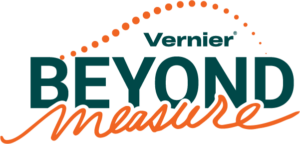
Sign up for our newsletter
Stay in the loop! Beyond Measure delivers monthly updates on the latest news, ideas, and STEM resources from Vernier.
Beyond Measure started as a printed, biannual newsletter in 1984. See the evolution of STEM education over 41 years.
